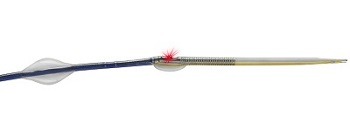
Avinger has received 510(k) clearance from the US Food and Drug Administration (FDA) for an enhanced version of its Pantheris lumivascular atherectomy system, an image-guided atherectomy device for the treatment of peripheral arterial disease. Avinger will commence US commercialisation of this enhanced version of Pantheris immediately, which the company says features improved ergonomics, physician controls and manufacturability.
Lumivascular technology utilised in the Pantheris system allows physicians to see from inside the artery during a directional atherectomy procedure by using optical coherence tomography (OCT). In the past, physicians have had to rely solely on X-ray as well as touch and feel to guide their tools while they try to treat complicated arterial disease. With the lumivascular approach, physicians can more accurately navigate their devices and treat peripheral arterial disease lesions, thanks to the OCT images they see from inside the artery, according to an Avinger press release.
“Atherectomy is a proven treatment that relieves pain and restores blood flow, and Pantheris has been eagerly anticipated in the clinical community because it is a leap forward in atherectomy technology compared to what we have had in the past,” said Thomas Davis, of St John Hospital and Medical Center in St Clair Shores, USA. “Now, for the first time, we are able to see exactly where we are removing the plaque, and are better able to leave the healthy artery alone. Clinical data suggests that the precision offered with Pantheris will have a lasting positive effect on patient outcomes. In addition, Pantheris visualizes the artery without requiring ionizing radiation. Thus, OCT has the potential to reduce physician and patient X-ray exposure, which is a concern for all clinicians performing multiple procedures.”
Pantheris has demonstrated clinical effectiveness and a positive safety profile. In the recently completed VISION study, 130 patients were treated with Pantheris and followed for a period of six months. The study achieved its primary safety and efficacy endpoints and showed a target lesion revascularisation rate of 8%, and no vessel perforations, clinically significant dissection or late aneurysm resulted from Pantheris.













